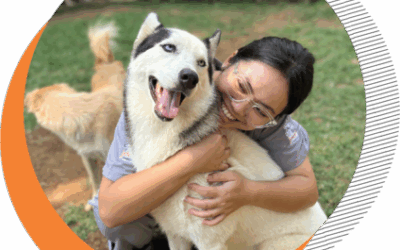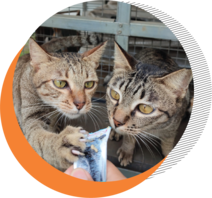
Adoption: The Key to Helping Animal Shelters Operate Better
By : Drh. Mikeu Paujiah
Stray animal shelters play a vital role in providing protection and care for abandoned, injured, or abused animals. However, the sustainability of these shelters heavily depends on community support, one of which is through the adoption process.
Here are several reasons why adoption is crucial and how it helps animal shelters operate more effectively.
1. Reducing Overcrowding in Shelters
Stray animal shelters often face severe overcrowding due to the continuous influx of animals. Increasing adoption rates can:
- Reduce Stress and Disease Risk: A high adoption rate prevents overcrowding, allowing animals to receive better care and live in a more comfortable environment.
- Minimize Euthanasia: A lower number of animals in shelters helps reduce the likelihood of euthanasia, which is sometimes performed due to resource constraints.
According to data from ASPCA (https://www.aspca.org), an increase in adoption programs significantly reduces the number of animals kept in high-density conditions, improving overall animal welfare.
2. Financial Support for Operations
Adoption not only provides new homes for animals but also helps shelters generate:
- Revenue from Adoption Fees: Many shelters charge an adoption fee, which, although affordable, helps cover operational costs such as food, healthcare, and facility maintenance.
- Donation Support: Successful adoption stories often inspire community members to donate, providing long-term financial stability for shelters.
Information from Humane Society International (https://www.hsi.org) indicates that shelters with active adoption programs tend to have better financial stability, enabling them to invest in improved care and facilities.
3. Raising Public Awareness and Education
Pet adoption also positively impacts public awareness regarding animal welfare by:
- Educating the Public: Adoption campaigns help people understand the importance of responsible pet ownership and preventing animal abandonment.
- Breaking Stigmas: Adoption helps change negative perceptions about shelter animals, proving they deserve love and proper care.
Adoption programs often feature inspiring stories that touch people’s hearts and encourage them to support animal welfare initiatives, fostering a more compassionate community.
4. Encouraging Community and Government Collaboration
Successful adoption programs not only involve shelters but also:
- Community Collaboration: Local organizations, influencers, and volunteers play an active role in spreading awareness and facilitating adoptions.
- Government Support: Many local governments support adoption programs through policies and joint campaigns, ensuring smoother shelter operations.
The involvement of various stakeholders creates a supportive ecosystem for animal welfare.
Conclusion
Pet adoption is a win-win solution for all parties involved. For animals, it provides a second chance to live in a loving environment. For shelters, it alleviates overcrowding, enhances animal welfare, and secures essential funding for operations. Additionally, adoption strengthens awareness and collaboration between communities, animal welfare organizations, and governments.
Support for adoption programs must continue to grow so that stray animal shelters can operate more effectively and provide maximum protection for animals in need.
With increased awareness and participation in adoption initiatives, we can ensure that animal shelters continue to thrive and offer a better life for every animal in need.
Reference :
ASPCA (American Society for the Prevention of Cruelty to Animals).
Website: [https://www.aspca.org](https://www.aspca.org)
Humane Society International.
Website: [https://www.hsi.org](https://www.hsi.org)
The Humane Society of the United States.
Website: [https://www.humanesociety.org](https://www.humanesociety.org)
Related Post :
Pets Suitable for Children, According to Age!
Find the right pet for your child based on their age. From fish to dogs, check out our child-friendly pet recommendations here!By: Drh. Mikeu Paujiah, Dipl. MontessoriChoosing a pet for your child isn’t just about picking the cutest one. Every animal has its own...
Tips for Traveling with Pets: Journey & Post-Arrival Care
By: drh. Mikeu Paujiah & Maryam SmeerTraveling with your pet? Check out tips for a safe and comfortable journey, plus post-trip care to keep them healthy and happy during the holiday!After making thorough preparations before traveling, it's time to understand how...
Tips for Traveling with Pets: Essential Preparations You Must Make
By: drh. Mikeu Paujiah & Maryam, S. KomHomecoming trips (mudik) are eagerly anticipated by many, especially during long holidays or festive seasons. However, for pet owners, traveling with their beloved pets can be a challenge.Whether you decide to leave your pet...
Scabies in Cats: Causes, Symptoms, and Treatment
By: Drh. Mikeu Paujiah dan Maryam SmeerScabies is a common skin disease in cats, caused by tiny mites that infect the skin and lead to intense itching. If left untreated, scabies can spread throughout the cat's body and may even be transmitted to other animals and...
Common Issues in Animal Shelters and Their Solutions
By: Drh.Mikeu PaujiahAnimal shelters play a vital role in providing protection and care for homeless animals. However, these shelters often face various challenges that can disrupt operations and impact the welfare of the animals within them.Here are some common...
Maintaining World Balance with One Health One Welfare
By: AWI TeamDr. Karanvir Kukreja, BVSc, MVPHM, Head of Campaigns Southeast Asia Companion Animals at FOUR PAWS International, was one of the keynote speakers at the Animal Welfare Indonesia-International Conference 2023.In his memorable presentation, Dr. Karanvir...





